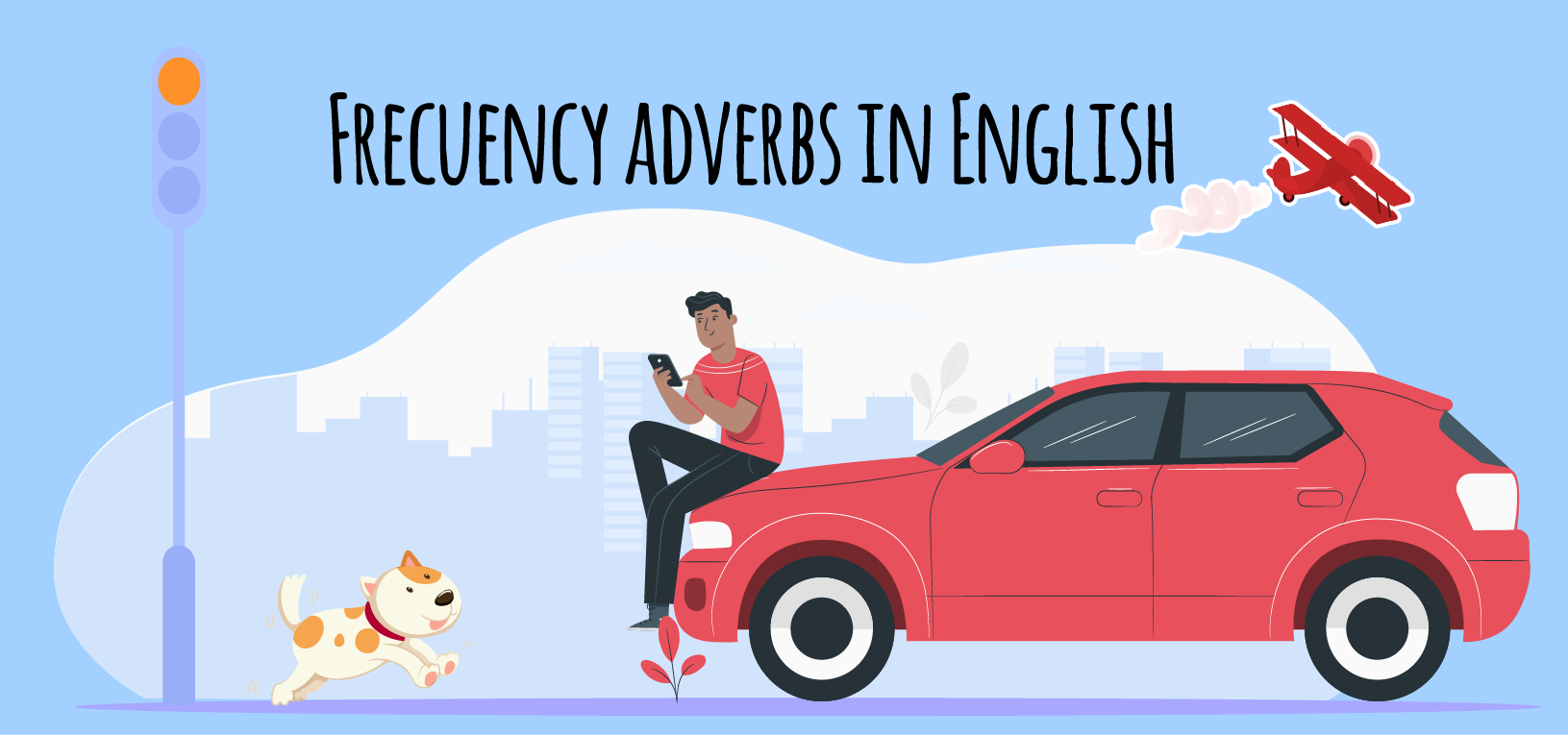Frecuency adverbs in English

Frecuency adverbs in English
Adverbs of frequency tell us how repeatedly we are doing things or how often they happen. They can describe a defined frequency daily, every week, annually (daily, weekly, yearly) or indefinite always, usually, never (always, normally, never). For example: I go swimming every week vs. I never go swimming. (Voy a nadar todas las semanas versus nunca voy a nadar).
In this article we explain everything about the adverbs of frequency in English , which is the way that the English have to explain when something happens at a certain time. To do this, we must pay attention to their placement in the sentences, due to certain conditions.
What are adverbs of frequency?
They are the words with which we say how often something happens or can happen, that is why adverbs change or qualify the meaning of a sentence. Adverbs of frequency always tell us how often something happens, whether in definite or undefined terms.
An adverb that describes the frequency defined as weekly, daily or yearly, is an adverb of frequency . There is also the adverb that describes an indefinite frequency and does not specify the exact period of time, examples are: sometimes, often and rarely , (a veces, a menudo y raramente).
When they used
Use adverbs of frequency to explain how often something happens . They are used very often, to indicate routine or repeated activities, so they are frequently used with the simple present tense.
If a sentence has only one verb , place the adverb in the middle of the sentence so that it comes after the subject but before the verb. For example: Tom never flies. Always take the bus .(Tom nunca vuela. Siempre toma el bus).
But when you use a negative frequency adverb or when forming a question , place it before the main verb. For example: Do you usually get up so late? (¿Suele levantarse tan tarde?).
Adverbs of frequency are very often used to indicate routine or repeated activities , so they are sometimes used with the simple present tense. If a sentence has only one verb, place the adverb of frequency in the middle of the sentence so that it comes after the subject, but before the verb.
How should we use them?
Actually word order can be very complicated with adverbs. The questions that arise are Where do the adverbs of frequency go in a sentence? At the beginning or at the end? Are they before or after the verb? Let’s take a look at some of the rules! .
Most adverbs of frequency go in the middle of a sentence, before the main verb:
- Subject + frequency adverb + main verb.
eg: We usually go to the cinema on Saturdays.
(Solemos ir al cine los sábados).
Basic statement: we go to the movies on Saturdays. If I want to tell you about how often we do this then I need to use an adverb. The main verb is go “to go”, so we put the adverb before it.
Some more examples:
- He wears a hat (Él usa un sombrero). Si quiero que sepas con qué frecuencia usa sombrero, entonces necesito utilizar un adverbio. El verbo aquí es wear “usar”, por lo que el adverbio lo precede: He always wears a hat (Él siempre usa sombrero).
- He’s late (él llega tarde). Una vez más, si quiero advertirles la frecuencia con la que llega tarde, entonces necesito un adverbio. Aquí, el verbo es late “tarde”, por lo que el adverbio de frecuencia iría antes: Is always late. (Siempre llega tarde).
Auxiliar verb
When there is an auxiliary verb (for example, have, will, should, would, should, can, could, may, might, must ) followed by a main verb, then the adverb goes between the auxiliary verb and the main verb:
- Subject + auxiliary verb + frequency adverb + main verb.
Here are some examples:
Positive: She must listen to her teacher . Must “Debe” is the auxiliary verb and listen (“escuchar”) is the main verb, so we put the adverb in the middle: She must always listen to her teacher. It does not vary because it is the same rule as before: the adverb goes before the main verb.
Negative : I don’t go to bed until it’s dark (no me acuesto hasta que anochece). This time don´t “no” is the auxiliary verb, go “ir” is the main verb, and we put the adverb between them:I don’t usually go to bed until it’s dark (no suelo ir a la cama hasta que oscurece).
Question: Has Sarah lived in Amsterdam? ¿Sarah ha vivido en Amsterdam? As usual, the subject and the auxiliary verb switch places in the order of the questions. The adverb goes between the auxiliary verb (has) and the main verb lived (vivido), and immediately after the subject (Sarah): Sarah always lived in Amsterdam?¿Sarah ha vivido siempre en Amsterdam?.
The exception is the verb “to be”
When you use an adverb with the verb “to be” , you must be careful with the order of the words because the adverb comes after (not before!):
- Subject + being + adverb of frequency, examples:
am always tired after work. (Siempre estoy cansado después del trabajo).
She is never. Ella nunca es.
They are constantly. (Están constantemente).
Also, if what you want is to obtain an official title, we leave you the number 1 online platform .



